Introduction: The Rise of the Urban Jungle
In 2025, amidst the rising smog, screen time, and space constraints of modern Indian cities, a quiet revolution is unfolding—urban jungles.
From Mumbai’s micro-balconies overflowing with Monsteras, to Bangalore apartments turned into palm sanctuaries, to Delhi rooftops doubling as vegetable farms — Indian homes are going green like never before.
But this isn’t just about adding a few potted plants. It’s about transforming living spaces into lush, breathable, biophilic zones that reconnect us with nature while redefining aesthetics, sustainability, and mental health.
● So what’s driving this indoor jungle obsession?
● What design trends, plant choices, and layout ideas are booming in 2025?
● And how can homeowners, renters, and architects bring the outside in — smartly?
Let’s decode how Indian homes are becoming the green sanctuaries we all need.
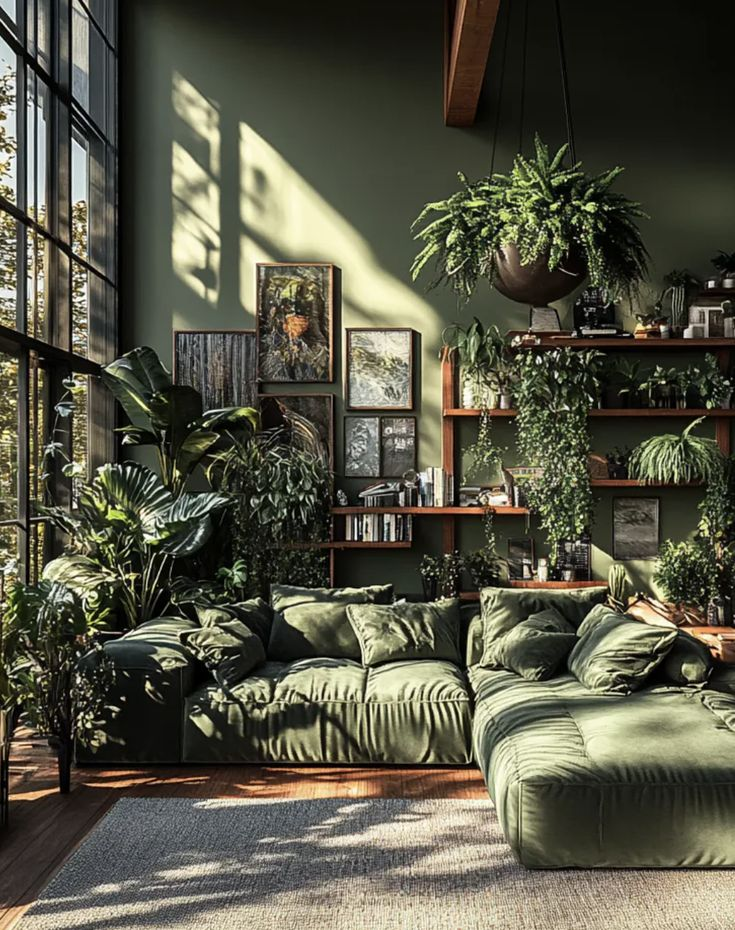
1. Why Urban Jungles Are Taking Root in Indian Homes
📈 Wellness Meets Aesthetic
India’s growing middle and upper classes are prioritizing well-being, mindfulness, and sensory richness in their homes.
● A Harvard study (2023) found that indoor greenery reduces stress by up to 37%
● Indoor plants also reduce indoor air pollutants like formaldehyde and benzene
● The global boom in “green interiors” has trickled into Indian Instagram culture and design language
🌱 COVID Legacy + Climate Anxiety
After months of lockdowns and rising heatwaves, Indians are craving living spaces that breathe — literally and figuratively.
● More people now work from home, and want calming, rejuvenating environments
● Climate-conscious youth are turning to home gardens, composting, and balcony farming
● A garden isn’t a luxury anymore — it’s a necessity, even in a 2BHK
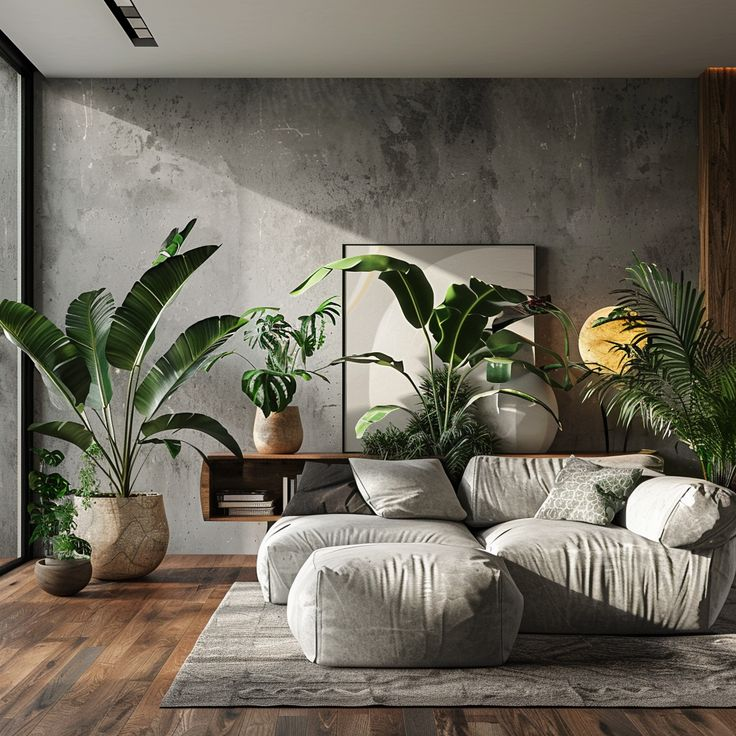
2. The Urban Jungle Aesthetic — What Does It Look Like in India?
The urban jungle trend blends boho, biophilic, minimalist, and tropical design elements. In Indian homes, it’s evolving uniquely with:
● Hanging Plant Cascades
Macrame hangers, ceiling hooks, and trailing creepers like money plant, English ivy, or spider plant are adding depth to interiors.
● Vertical Gardens
Wall-mounted green walls (real or faux) in balconies, entryways, or even bathrooms are now design staples.
● Indoor Trees
Compact species like Areca Palm, Fiddle Leaf Fig (Ficus), Rubber Plant, and Bamboo Palm add tropical vibes to living rooms.
● Terracotta & Wicker Planters
Rustic, earthy containers are replacing plastic pots, blending Indian craft aesthetics with greenery.
● DIY Kitchen Gardens
Chillies, basil, curry leaves, tomatoes, spinach—urban homes now grow their own ingredients on windowsills and terraces.
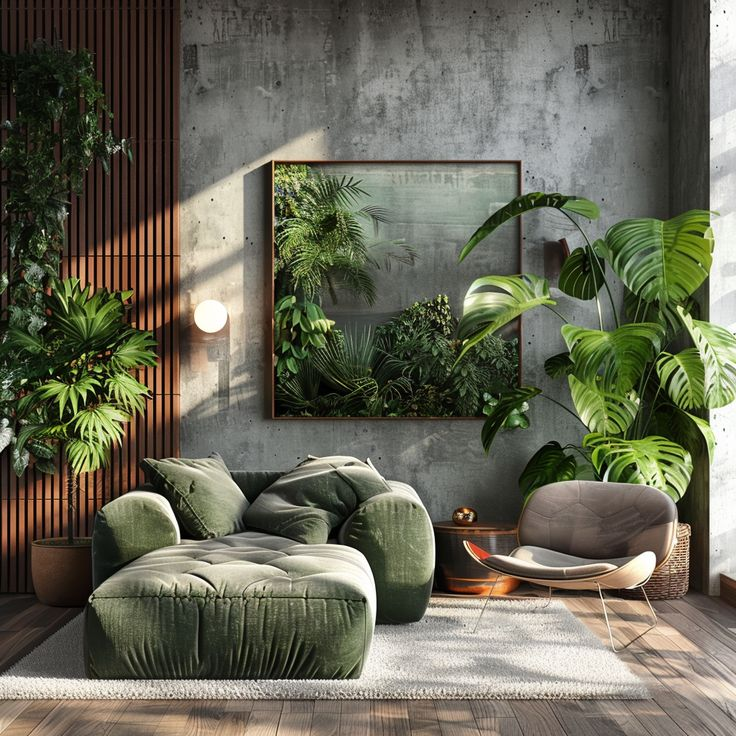
3. Trending Plants in 2025 for Indian Urban Jungles
Here’s what’s hot (and sustainable) in Indian indoor greenery now:
| Plant Name | Why It’s Popular |
|---|---|
| Areca Palm | Air-purifying, pet-friendly, great for corners |
| Monstera Deliciosa | Statement leaves, tropical vibe |
| ZZ Plant (Zamioculcas) | Low maintenance, elegant |
| Snake Plant | Excellent oxygen booster, survives low light |
| Spider Plant | Trailing, great for hanging setups |
| Rubber Plant | Glossy leaves, adds volume |
| Money Plant | Low-care, cultural symbolism of prosperity |
| Fiddle Leaf Fig | Instagram favourite, thrives in humid cities like Mumbai or Kochi |
| Peace Lily | Purifies air, blooms indoors |
4. How Small Spaces Are Going Green — Big Time
You don’t need a backyard to build an urban jungle.
✅ Balcony-to-Garden Makeovers
● Use bamboo trellises + vertical racks
● Add synthetic turf flooring
● Hang lanterns, vines, and potted herbs
✅ Windowsills & Corner Greens
● Floating shelf planters
● Corner plant ladders or stands
● Use reflective mirrors to double the visual “green” impact
✅ Bathroom Oasis
● Snake plant, aloe vera, or ferns thrive in humid environments
● Pebbled floors + wood textures + hanging creepers = spa feel
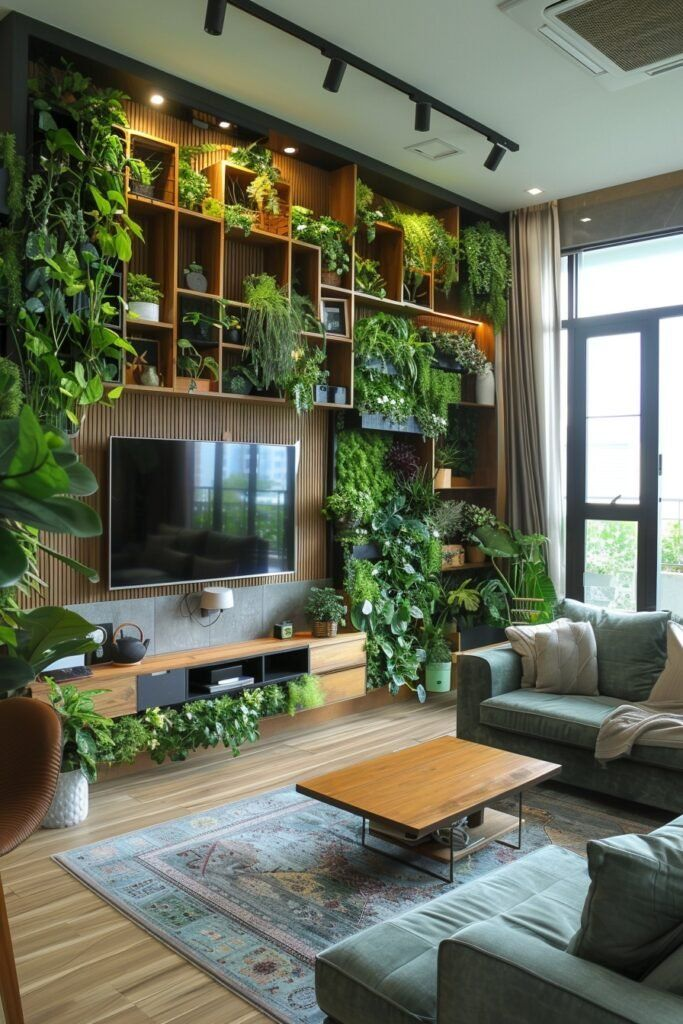
5. Mental Health Benefits of Urban Green Sanctuaries
Research shows that biophilic design (bringing nature into living spaces) can significantly impact our emotional state.
● Plants reduce cortisol, the stress hormone
● Greenery improves focus and cognitive clarity
● Caring for plants encourages mindfulness and routine
In a time where urban India is battling loneliness, overstimulation, and burnout — plants offer peace without prescription.
6. Urban Jungle Meets Vastu and Indian Traditions
Interestingly, urban jungles align well with Indian traditions like:
● Vastu: Tulsi, money plant, and banana plants have deep symbolic and directional importance
● Ayurveda: Neem, aloe vera, and tulsi are considered purifying
● Ritual use: Betel leaves, banana stalks, and mango leaves are regularly used in Indian pujas
Designers are now blending modern biophilia with Indian spiritual ecology — creating homes that are both peaceful and purposeful.
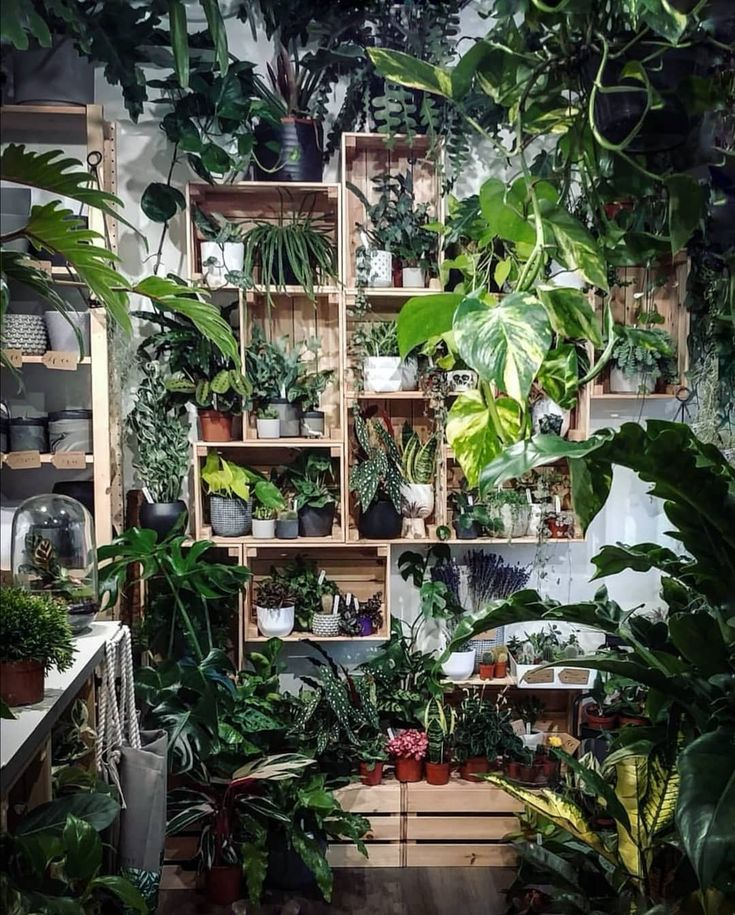
7. How Architects and Interior Designers Are Responding
The urban jungle movement has inspired a new language in Indian architecture and interiors:
● Indoor courtyards even in apartments (via atriums or skylight wells)
● Bio-walls and moss panels in lobbies and office interiors
● Material palettes with stone, lime plaster, exposed brick + planters
● Light shelves, climate-sensitive terraces, and green nooks as standard offerings
● Integration with smart irrigation, hydroponics, and app-controlled misting systems
Designers like Sanjay Puri, Brinda Somaya, and newer eco-architects are championing this green evolution.
8. Maintenance Hacks: How to Sustain Your Urban Jungle
The key to enjoying an urban jungle isn’t just design—it’s maintenance made easy.
● Use self-watering planters
● Schedule a weekly plant-care hour (dusting, rotating, pruning)
● Choose low-light, low-maintenance species for office areas
● Group plants by light and water needs
● Use neem oil sprays for pest control
Bonus Tip: Create a “Plant Passport” — track names, care notes, and growth for each plant. Makes plant-parenting fun and structured!
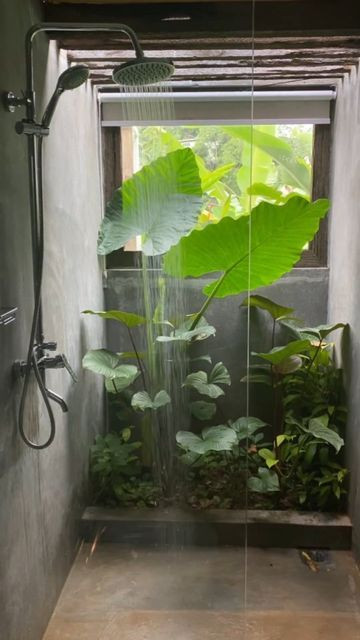
9. Urban Jungle + Sustainability = Win-Win
Urban jungles are not just beautiful—they also contribute to climate resilience.
● Plants reduce ambient temperature indoors by up to 5°C
● Green walls provide insulation, reducing electricity bills
● Urban farms reduce dependence on high-carbon footprint foods
● Plant-based interiors support sustainable living with less plastic décor
In short, eco-conscious design is no longer optional. It’s aspirational.
10. The Business of Green: Market Trends in 2025
According to India Home & Garden Trends 2025:
● Urban indoor plant market in India crossed ₹1,300 crore in 2024
● Startup brands like Ugaoo, Nurserylive, Harit, and MyBageecha are booming
● Influencer-led “plant styling” workshops, jungle-makeover consultancies, and DIY balcony garden kits are now common
Interior Designers Are Now Offering:
▪ “Green Home Packages”
▪ Monthly Plant Maintenance Plans
▪ Smart Garden Integrations
▪ Indoor Landscaping with Space Planning
11. How to Start Your Urban Jungle — Step by Step
🪴 Beginner’s Plan (For 1BHK/2BHK)
- Start with 3 indoor plants: Snake Plant, Money Plant, ZZ Plant
- Add hanging creepers near windows or balconies
- Create a “plant shelf” or corner with lights and pots
- Use terracotta or ceramic pots for healthy roots
- Track sunlight: east-facing windows are ideal
🌿 For Families
- Add child-safe, pet-safe species
- Create a kitchen herb box (mint, coriander, curry leaf)
- Invest in a smart irrigation setup
- Create a vertical herb wall in the kitchen
- Turn balconies into reading + green zones
Conclusion: Nature Isn’t Outside — It’s Inside Now
Indian homes are no longer sterile boxes of cement and plastic. They’re alive—full of chlorophyll, textures, and conscious breathability.
The urban jungle trend is more than a fad. It’s a deep, slow rebellion against chaos — one rooted in nature.
Whether you have 5 sq. ft. or 500 sq. ft., your home can be your personal sanctuary. One Monstera, one spider plant, one compost pot at a time.
Need Help Designing Your Green Home?
📩 Mishul Gupta helps you turn your space into a breathable, biophilic sanctuary — whether it’s a 2BHK, a villa, or a commercial space.
● Urban Jungle Layout Planning
● Balcony Gardens & Vertical Farming Design
● Sustainable Materials & Smart Green Systems
● Green Interior Styling for Home Shoots & Airbnb
● Monthly Plant Curation Packages
📧 Email: contact@mishulgupta.com
📍 Ambala, Haryana | Projects Pan India
🌐 www.mishulgupta.com
